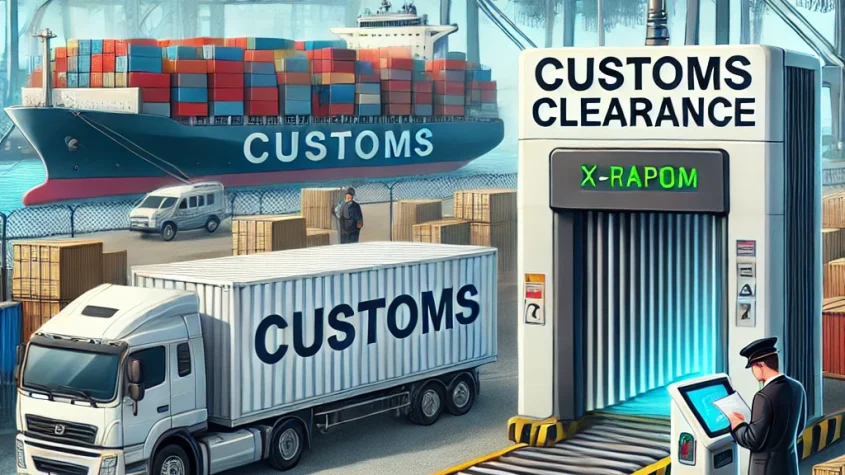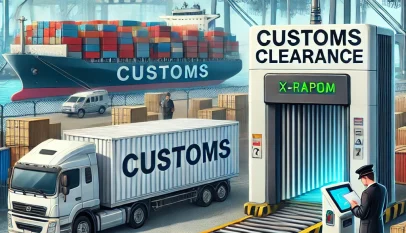Customs Clearance Software: Streamlining Your Import and Export Processes
Customs clearance software plays a crucial role in simplifying the complex processes associated with international shipping and trade. This technology streamlines documentation, enhances compliance with regulations, and reduces delays, making it essential for businesses involved in importing and exporting goods. As global trade continues to grow, the demand for efficient and reliable customs solutions becomes even more pressing.
Businesses of all sizes benefit from utilizing customs clearance software, as it minimizes human error and accelerates the clearance process. By automating various tasks, companies can save time and resources while ensuring that their shipments meet all legal requirements. This efficiency can lead to improved customer satisfaction and increased competitiveness in the marketplace.
In a rapidly evolving trade landscape, the adoption of customs clearance software offers a strategic advantage. Organizations can stay ahead by leveraging technology to navigate the complexities of customs regulations, making it vital for those looking to optimize their logistics and operational processes.
Functionality of Customs Clearance Software
Customs clearance software streamlines the process of shipping goods across borders. It provides essential functions that facilitate compliance, documentation, and tariff management, leading to more efficient operations.
Classification and Tariff Management
Classification and tariff management is crucial for determining the duties and taxes applicable to imported or exported goods. Customs clearance software often includes comprehensive databases with updated tariff codes that help users correctly classify products.
- Automated Classification: Many systems utilize algorithms to suggest tariff classifications based on product descriptions.
- Tariff Updates: Regular updates ensure compliance with changing regulations and tariffs in different regions.
- Duty Calculation: Software can automatically calculate potential duties and taxes based on the chosen classifications.
This functionality minimizes errors and maximizes compliance with international trade laws.
Compliance and Regulatory Requirements
Compliance features within customs clearance software help businesses adhere to local and international regulations. This aspect is critical in avoiding delays or penalties in the shipping process.
- Real-time Regulatory Updates: Software often includes alerts for changes in trade regulations, ensuring that businesses stay informed.
- Audit Trails: It maintains detailed logs of all transactions and communications with customs authorities, which aids in audits.
- Risk Management: Software can identify high-risk shipments and flag them for additional scrutiny, enhancing the security and integrity of trade operations.
Compliance tools reduce the risk of regulatory non-compliance.
Documentation Management
Effective documentation management is essential for smooth customs clearance. This functionality allows users to manage all necessary paperwork electronically, ensuring quick access and proper organization.
- Document Templates: Many systems provide customizable templates for essential customs documents, streamlining the preparation process.
- Centralized Storage: Software typically offers cloud-based storage for all relevant documents, accessible from any device.
- Version Control: Changes to documents can be tracked, ensuring that the most current version is always in use.
This management system minimizes the risk of lost documents and ensures all paperwork is in order for customs inspections.
Adoption and Integration
Successful adoption of customs clearance software involves an effective implementation process and ensuring compatibility with existing systems. A structured approach can facilitate a smoother transition and enhance operational efficiency.
Implementation Process
The implementation process for customs clearance software consists of several critical phases. First, a comprehensive needs assessment should be conducted to identify specific requirements. This groundwork helps in selecting software that aligns with operational goals.
Next, organizations typically configure the system to suit their workflow. This may involve customization of features and user interfaces. Training sessions for staff are essential to ensure they are proficient in using the new system.
Following configuration, a pilot phase can be beneficial. Testing the software in a controlled environment allows for troubleshooting and adjustments without disrupting daily operations. By carefully managing each step, companies can expedite the adoption process and minimize potential setbacks.
System Compatibility and Integration
Ensuring compatibility with existing systems is vital for seamless integration of customs clearance software. It is essential to assess the software capabilities to integrate with legacy systems, inventory management, and shipping platforms.
Many solutions offer API support, enabling easier data exchange and reducing manual entry. Compatibility with existing data formats can ease transition challenges.
Furthermore, organizations should consider their IT infrastructure. Adequate network capacity and security measures are crucial for protecting sensitive customs data. A thorough compatibility evaluation promotes a smoother integration process, promoting long-term success of the software in the organization.
British Virgin Islands Financial Services Commission Regulatory Overview and Compliance Guide
The British Virgin Islands Financial Services Commission (BVI FSC) is the primary regulato…














